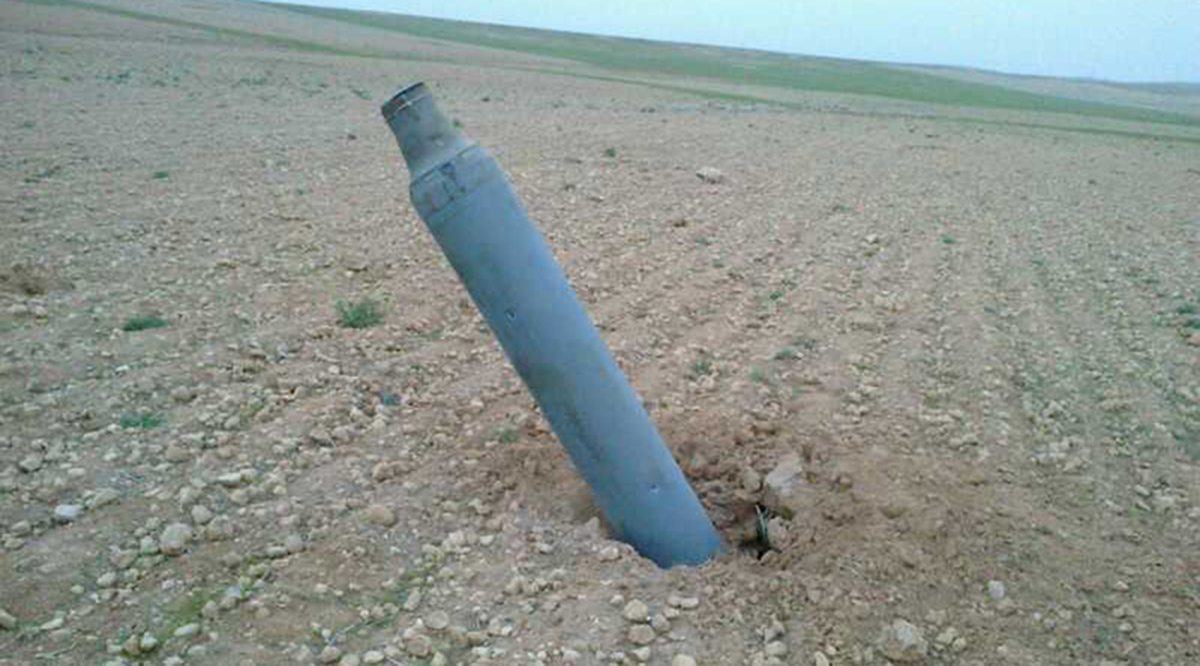 Ukairbat is located to the eastern countryside of Hama. The government forces have shelled it repeatedly lately with cluster munitions.
Ukairbat is located to the eastern countryside of Hama. The government forces have shelled it repeatedly lately with cluster munitions.
The team of the Syrian Network for Human Rights (SNHR) has observed the widening use of cluster munitions by the government forces which were encouraged by almost a complete silence by the international community which failed until now in only condemning the government forces for using this weapon which is prohibited according to the International Human Law.
The government forces shelled Yabrud with cluster munitions on January 31 and March 1, 2014. Before that it shelled Keferzita in Hama countryside on February 12, 2014. It seems that the government forces are substituting chemical weapons by cluster munitions.
In this particular case, investigations conducted by SNHR showed that the area targeted is a civic area and there are no concrete proofs of the existence of rebel fighters in it.
Government forces have used cluster munitions in dozens of areas along 9 governorates, the last of which was during the attacks on Yabrud in the Damascus Countryside. These attacks caused the killing of 138 civilians, among them 64 children (48%) and 14 women (12%). This means that a total of 60% of the victims are women and children, while number of men is 48. Only 3 rebels which were killed which constitutes only 2.5 % of the total victims of the attacks.
The real threat of cluster munitions continues to exist even after the attacks as hundreds of submunitions may fail to explode upon impact and might explode in the future when people close them unknowing of their existence, causing them to be killed or injured.
The Syrian Network for Human Rights documented dozens of cases for people killed or injured in different Syrian governorates because of explosions caused by unexploded cluster submunitions that spread now in suburbs, schools and fields.
Our dear colleagues in Human Rights Watch issued a number of reports that prove the widening use of cluster munitions by the Syrian government forces in its bombing of the Syrian governorates. They could specify – through huge efforts – seven kinds of cluster munitions used.
The methodology of the report is based on interviews conducted by the team of SNHR with activists and eye witnesses from Hama. The report contains a recorded account of one eye witness. The team of SNHR has also checked the pictures and videos provided by activists from the city who cooperate with us. Names of eye witnesses have been changed in the report according to their own wills. SNHR couldn’t visit the area because of the ban posed by the government forces on human rights organizations.


